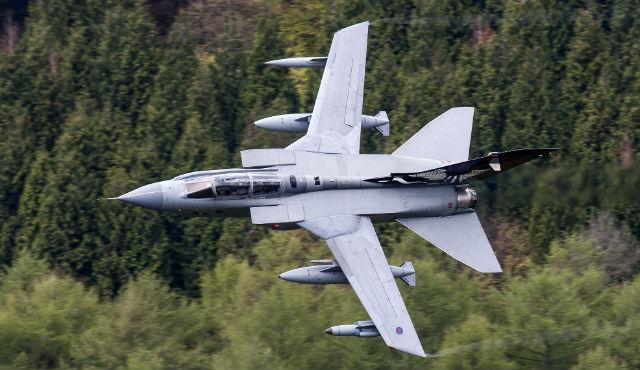BAE Systems expects to make further flight advances this year in using parts manufactured by 3D printing machines, following an initial risk-reduction activity linked to the UK’s Panavia Tornado GR4. As detailed by the company in early January, this involved the production of three different types of component, one of which was flown with the strike platform during a test sortie conducted from its Warton site in Lancashire.
Mike Murray, BAE’s head of airframe integration, says the company is currently developing a qualification process to support additional possible uses for printed parts, and that additional opportunities for their use are likely to emerge in 2014.
“The work so far was to explore the art of the possible for a capability that is not that far away,” Murray says. The initial focus was on trialling functional parts that would not be detrimental to the aircraft’s operation, including two which were developed solely for use during ground maintenance. Produced using a fusion deposition modelling machine installed at the Royal Air Force’s Marham base in Norfolk, these include a support strut to keep the Tornado’s air intake door open during ground inspection, and a protective cover for radio equipment installed within the cockpit.

Rex Features
BAE also contracted an external supplier to produce a 3D printed metal bracket for installation within an aircraft pod, which subsequently underwent successful testing in the air. The company has now invested in a metal powder bed additive layer manufacturing machine of its own, in order to be able to conduct further such work.
“This is a really good capability to take forward,” says Murray of the for-now more mature plastic printing process, noting that parts could be produced straight from CAD drawings without the need for manufacturing production jigs and related tooling. “Traditionally it can take six months to design and produce a new component, but we have been able to significantly reduce this – to as little as two weeks,” he says. “It’s also showing some quite significant cost savings.”
Murray says other activities conducted by the manufacturer have already seen it investigate the potential of printing some small plastic parts for the BAe 146, and adds that its “significant investment” in this area also includes collaboration with academia. “Further opportunities should start to develop this year,” he adds.
While industry is still perhaps some years away from being able to cost-effectively produce large and flight-worthy structures using 3D printing techniques, Murray notes that the early work performed by BAE proves that this is already being viewed as more of a manufacturing issue than an engineering one.
Source: FlightGlobal.com























